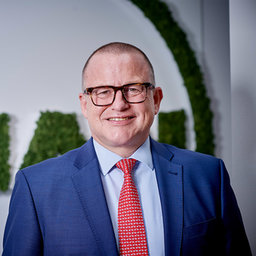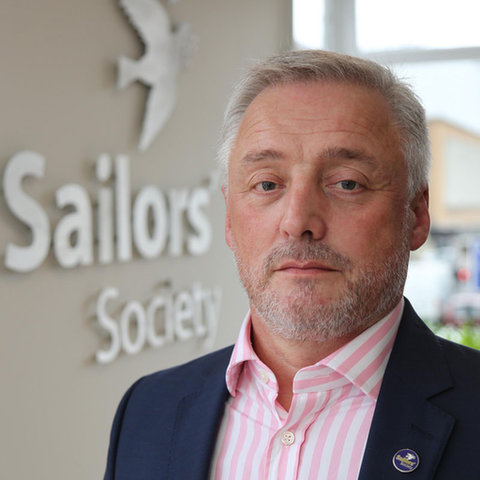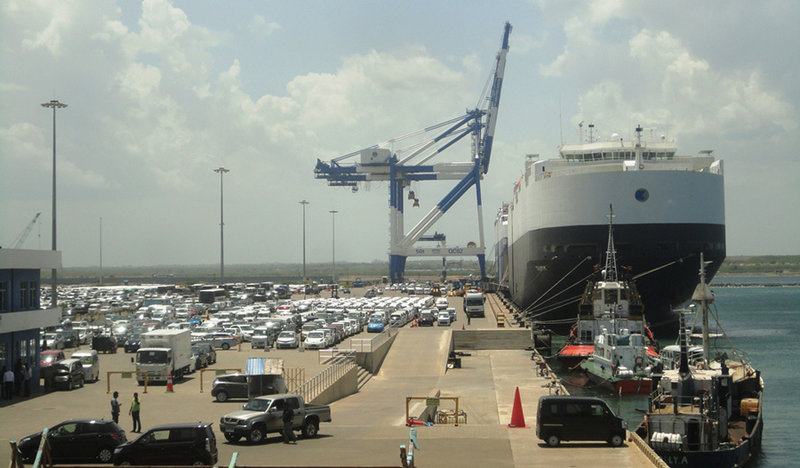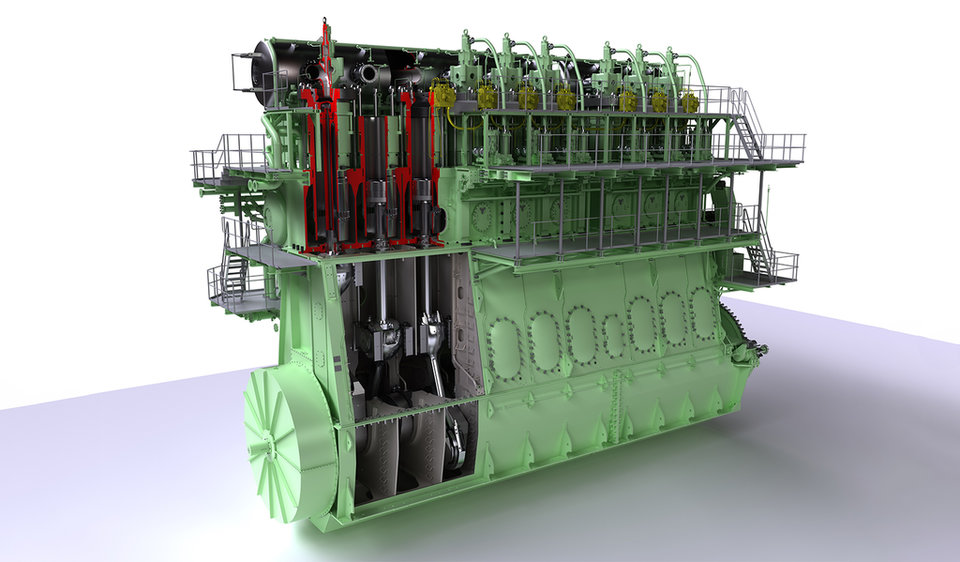Ports
Getting to zero:
inside a new coalition for greener shipping
A new group called the Getting to Zero Coalition has been set up with the aim of developing zero-emission vessels and making them commercially available by 2030. Frances Marcellin finds out more about the coalition and talks to newest member MAN Energy Solutions to find out why they hopped on board.
“Have you heard
the notion that you have to do good in order to do well?” Man Energy Solutions Senior Vice President Bjarne Foldager asks. “We don’t want to be part of the problem, we want to be part of the solution,” he stresses, “and it is the right thing to do to make sure our business is sustainable in the long term.” This is, as Foldager explains, is why MAN Energy Solutions has just joined the Getting to Zero Coalition. A global alliance of around 80 companies from the maritime, finance, energy and infrastructure industries, the Getting to Zero Coalition is continuing to grow. The goal is to get “commercially viable deep-sea zero-emission vessels powered by zero-emission fuels into operation by 2030”.
As ships have an expected life of more than 20 years, those operating commercially in 2030 will still be part of the world fleet in 2050 so all efforts will work towards this target date.
Although the Coalition describes it as “maritime shipping’s moon-shot ambition”, it is striving to reach 100% decarbonisation by 2050, in line with the UN International Maritime Organisation’s (IMO) strategy to reduce greenhouse gases (GHG) by at least 50% of 2008 levels by 2050.

Man Energy Solutions senior vice-president Bjarne Foldager. Image: Man Energy Solutions

Stuart Rivers, CEO of Sailors’ Society.
Image courtesy of Sailors’ Society
The urgency for climate change action
The devastating impacts of the earth’s average surface temperature warming to more than 1.5°C above pre-industrial levels were outlined in a Special Report by the Intergovernmental Panel on Climate Change (IPCC), in October 2018. The document also confirmed that global warming had already reached 1°C more than pre-industrial times.
But a follow-up Special Report, released in September 2019, underlined the desperate urgency for action, stating that overwhelming evidence had shown that there would be “profound consequences for ecosystems and people”. It demanded that global warming must be limited to the lowest level (in line with the 2015 Paris Agreement) so that the impact can be reduced and managed.
Global warming has already reached 1°C more than pre-industrial times.
“We will only be able to keep global warming to well below 2°C above pre-industrial levels if we effect unprecedented transitions in all aspects of society, including energy, land and ecosystems, urban and infrastructure as well as industry,” stated Debra Roberts, Co-Chair of IPCC Working Group II. “The ambitious climate policies and emissions reductions required to deliver the Paris Agreement will also protect the ocean and cryosphere – and ultimately sustain all life on Earth.”
To achieve the decarbonisation goal, four areas of exploration have been identified: fuels, ships, market drivers and policies. The agreed timescale for delivery allows for solution development until 2023, followed by a test period until 2027, with preparations for roll-out occurring between 2028 and 2030.

Image courtesy of
MAN’s crucial role in facilitating change
MAN Energy Solutions has a dominant position within the merchant ships market, particularly the two-stroke engine. Around 80% of global trade is shipped around the world, accounting for 2%-3% of GHG emissions, and 50% of this figure is transported using MAN Energy Solutions’ engine designs.
Unless action is taken these GHG emissions will only increase due to an upturn in the shipping sector. UNCTAD confirmed in its Review of Maritime Transport 2018 that seaborne trade volumes reached 10.7 billion tonnes in 2018, up 411 million tonnes compared to the previous year. It estimates yearly growth continue at around 3.8% to 2023.
“In light of this we are taking our role in facilitating the decarbonisation of merchant shipping very seriously,” says Foldager, adding that the company has a two-pronged overall business strategy: decarbonisation and digitalisation. Both are crucial to success in this new chapter of the maritime industry, which demands new standards, investments and partnerships that operate on a global scale.
Foldager believes that the diversity and scope of the Getting to Zero alliance stands it in good stead for future success. For him, these partnerships are vital for finding global solutions.
It’s a wide coalition across the entire value chain and I think that’s a core reason why it will make a difference
“It’s a wide coalition across the entire value chain and I think that’s a core reason why it will make a difference,” he explains. “The nature of shipping is that it is a global business which means we have to have a global playing field, global rules and partners getting together to see how we can facilitate this transition, pushing legislation forward.”
He adds: “If you look who has signed up for this coalition, it’s a wide variety of companies and industries, not only shipowners and technology providers like ourselves, it’s banks, big trade, energy companies, bunker companies, and so on.”

illustration of the MAN B&W ME-GI engine, our dual-fuel engine that can operate on LNG as well as fuel oil. Image: Man Energy Solutions
Challenges to decarbonisation
There are many challenges ahead, but Foldager sees the need for global regulations as one of the greatest.
“The second big challenge I see is that as this business is very competitive, it means the solutions we come up with have to be business viable,” he stresses, adding that it will be extremely difficult to get sufficient leverage behind a solution otherwise. “If they have a competitive edge, I think they have a chance to move much faster.”
The Coalition has outlined that by 2023 zero-carbon energy sources will have been tested in pilot projects and “the production of the associated marine fuels can be scaled and produced at a price that will make the transition economically feasible”. By 2030 incentives and business models that make ZEVs viable are planned to be in place.
It is expected that ships running safely on zero-carbon energy sources will have been demonstrated, and that the production of the associated marine fuels can be scaled and produced at a price that will make the transition economically feasible.
Investment is another obstacle to overcome. “There is the investment that’s required on the ship and the technology, and also what has to be changed or upgraded,” he says, adding that infrastructure is also a “huge investment on a global scale”.
As this business is very competitive, it means the solutions we come up with have to be business viable
In order to achieve commercially viable ZEVs operating on deep-sea trade routes by 2030, infrastructure to facilitate production, distribution, storage and bunkering will be required.
The Coalition’s roadmap states that during phase three (2024 – 2027) expanding access to soft financing will reduce the costs involved with infrastructure transition and fuel production.
Based on the technologies that can already run on different fuels in MAN Energy Solution’s portfolio, Foldager is optimistic about the future. “This is quite a good foundation to develop,” he says. “We strongly believe that the Coalition is a good idea for the maritime business, for the environment and for our business as well.”